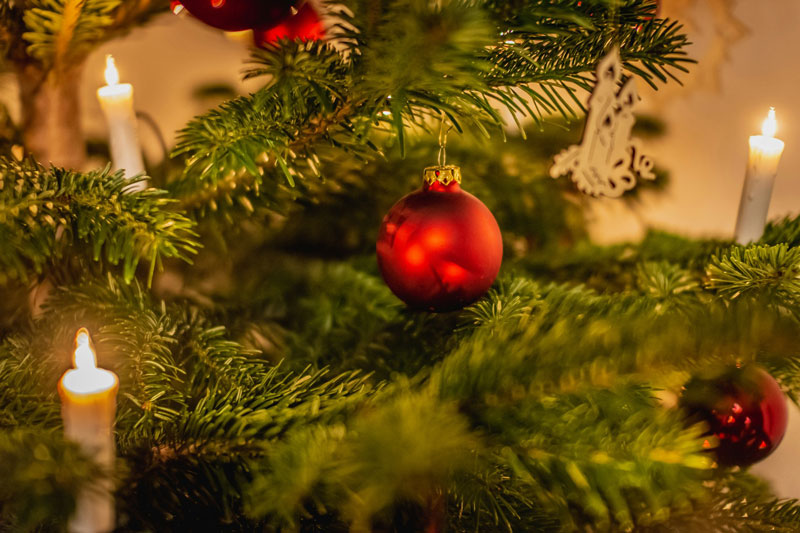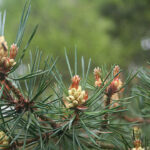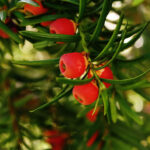
The History of Christmas Trees: From Sacred Evergreens to Festive Traditions

The Main Histories Behind the Christmas Tree
Pagan Roots: Evergreens as Symbols of Life
Long before Christmas trees were part of holiday traditions, ancient cultures used evergreens to symbolize life and renewal. During the winter solstice, when the days were shortest and the coldest, the evergreen tree stood as a powerful symbol of endurance. The Egyptians used palm leaves to celebrate the rebirth of the sun, while the Romans decorated their homes with evergreen wreaths during their festival of Saturnalia, a time of feasting and revelry.
In Northern Europe, cultures like the Celts and Norse saw the evergreen as a symbol of fertility and protection. The Norse believed that evergreen trees were sacred to the goddess Frigg, and the Celts associated holly and mistletoe with magical powers. These practices laid the foundation for later Christian traditions, where evergreens would come to represent eternal life and protection during the darkest months of the year.
The Christian Tradition: A Symbol of Christ’s Birth
The first recorded use of a decorated tree in Christian tradition dates back to 16th-century Germany. It is believed that early German Christians began the practice by decorating a tree in the home with apples to symbolize the Garden of Eden and the Fall of Man. Over time, these decorations became more elaborate, and other Christian symbols were added. Candles were often placed on the tree to represent Christ as the “Light of the World.”
By the 19th century, the Christmas tree tradition had spread beyond Germany. Queen Victoria of England and her German-born husband, Prince Albert, popularized the tree in Britain when they were depicted in a famous illustration standing around a Christmas tree with their children. This image sparked widespread adoption of the tree in homes across the UK, and soon after, it made its way to the United States.
The German Influence: Bringing the Christmas Tree Indoors
The Christmas tree, as we know it today, can largely be traced back to German traditions in the 16th century. One of the most popular stories attributes the addition of candles on trees to the Protestant reformer Martin Luther. According to legend, Luther was inspired by the sight of stars shining through tree branches on a winter night and recreated the scene by placing candles on his own tree.
In the 18th and 19th centuries, German immigrants brought the Christmas tree custom to America. In fact, by the 1850s, Christmas trees were a common feature in many American homes, especially in the Northeast. The production of artificial trees and mass-market decorations made Christmas trees more accessible, contributing to their widespread popularity.
The Victorian Era and Queen Victoria’s Influence
The tradition of decorating Christmas trees became a central part of British holiday celebrations in the mid-1800s. Queen Victoria and Prince Albert, who were both of German descent, made Christmas trees fashionable among the British upper classes. In 1848, an illustration in The Illustrated London News showed the royal family gathered around a Christmas tree, sparking public interest in the custom.
As the tradition spread, so did the decorations. By the 1870s, the Christmas tree had become a fixture in homes across Britain and North America, with families adding their own unique touch by decorating with candles, fruits, and later, glass ornaments.
The Evolution of Christmas Tree Decorations
Early Decorations: Edible Treats and Natural Materials
In the early days, many people decorated their trees with food items, such as apples, nuts, and gingerbread cookies. These edible ornaments were not only festive but practical, as they could be enjoyed once the holiday season was over. The use of candles as tree decorations also began around this time, symbolizing the light of Christ.
The Advent of Glass Ornaments
By the late 1800s, glass ornaments began to replace many of the natural decorations. The small German town of Lauscha became renowned for producing delicate, hand-blown glass baubles and figurines that were sold all over Europe and the United States. These glass ornaments added a touch of elegance and luxury to the tree, and many families began to collect them over time.
Electric Lights: A Bright New Era
The introduction of electric lights in the early 1900s revolutionized Christmas tree decorations. Prior to electric lights, families used candles, which were both risky and difficult to manage. The invention of electric Christmas lights made decorating safer, easier, and more vibrant. By the 1920s, electric lights had become a fixture on Christmas trees across America and Europe, enhancing the beauty and safety of holiday displays.
Modern Day: A Variety of Styles and Themes
Today, Christmas tree decorations are as varied as the people who decorate them. While some families maintain traditional decorations, others have embraced more modern themes, such as color-coordinated ornaments or themed trees. Some trees are adorned with nothing but lights, while others are covered in handmade ornaments passed down through generations. The possibilities for decorating a tree are endless, making the experience personal and unique for every family.
Popular Tree Varieties Used as Christmas Trees
The history of Christmas trees is a tale of transformation, from ancient symbols of life to the sparkling holiday icons we know today. With deep roots in pagan rituals, Christian symbolism, and European traditions, the evergreen tree has evolved into a beloved centerpiece of holiday celebrations. Whether you prefer a classic Nordmann Fir or a striking Blue Spruce, the Christmas tree continues to be a timeless symbol of the season’s warmth, joy, and togetherness.




















